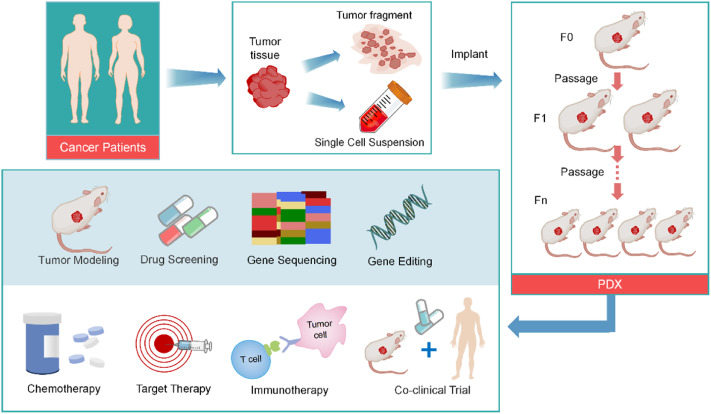
Patient-derived xenograft models: Current status, challenges, and innovations in cancer research


Despite advancing therapeutic treatments, cancer remains the leading cause of death worldwide, with most of its patients developing drug resistance and recurrence after initial treatment. Therefore, incorporating preclinical models that mimic human cancer biology and drug responses is essential for improving treatment efficacy and prognosis. Patient-derived xenograft (PDX) models, as a promising and reliable preclinical trial platform, retain key features of the original tumor such as gene expression profiles, histopathological features, drug responses, and molecular signatures more faithfully compared with traditional tumor cell line models and cell line-derived xenograft models. Their significant advantages have been the preferred choice in cancer research, especially demonstrating remarkable potential in drug development, clinical combination therapy, and precision medicine. However, the successful construction and effective application of PDX models still face several challenges. In this review, we summarize the details of constructing PDX models and the drivers affecting their success rates, which will provide some theoretical basis for subsequent model optimization. In the meantime, we delineate the strengths and weaknesses of various mature PDX models and other developing preclinical models, including PDX-derived models, organoids, and genetically engineered models. Moreover, we highlight the challenges of newly developed technologies on the PDX models. Finally, we emphasize the innovative usage of PDX models in a variety of cancer studies and offer insights into their prospects.
